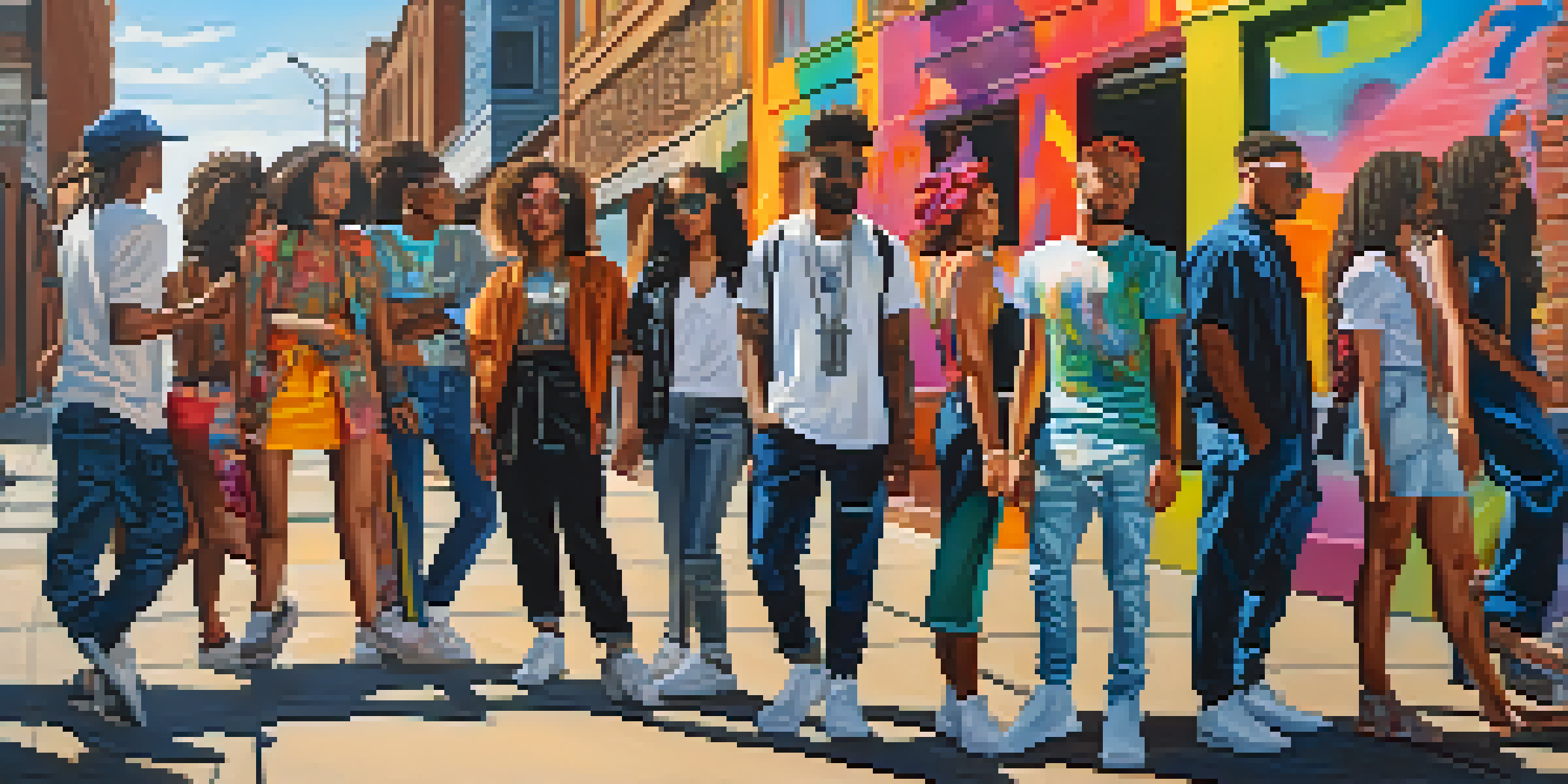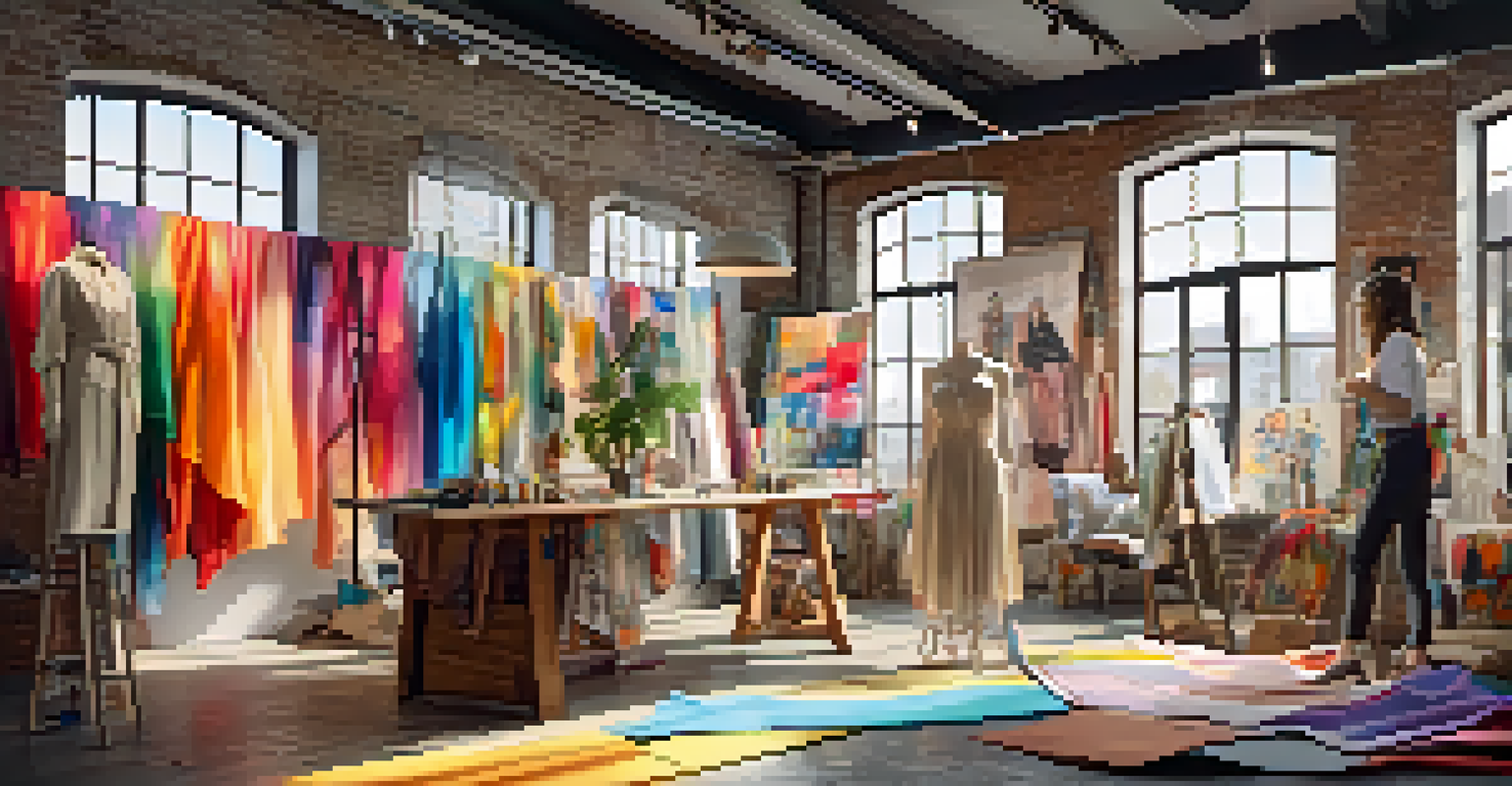Gender and Fashion: Challenging Norms Through Style Choices

Understanding Gender Norms in Fashion
Fashion has long been tied to gender norms, dictating what is deemed acceptable for men and women. These norms can often restrict personal expression, leading individuals to feel confined by societal expectations. For instance, the idea that only women can wear dresses has been a longstanding belief, but many are now challenging this notion, advocating for a more fluid approach to style.
Fashion is the armor to survive the reality of everyday life.
Over time, these norms have evolved, influenced by cultural shifts and social movements. The rise of unisex clothing lines and gender-neutral fashion indicates a growing acceptance of non-traditional styles. This evolution not only impacts the fashion industry but also encourages individuals to embrace their unique identities through their clothing choices.
Ultimately, understanding these norms is crucial to appreciating the ongoing transformation in fashion. By recognizing the constraints that traditional gender roles impose, we can celebrate the bold individuals who are redefining these boundaries, paving the way for more inclusive fashion.
The Impact of Pop Culture on Fashion Choices
Pop culture plays a significant role in shaping fashion trends and challenging gender norms. Icons like David Bowie and Prince, who famously blurred gender lines, have inspired countless individuals to express themselves freely. Their daring choices in clothing not only captivated audiences but also encouraged fans to explore their own identities through fashion.

Today, celebrities and influencers continue to push the envelope, showcasing a diverse range of styles that defy traditional gender classifications. For example, stars like Billy Porter and Jaden Smith often don outfits that challenge societal expectations, sparking conversations about gender and style. Their influence highlights how personal expression can inspire others to break free from restrictive fashion norms.
Challenging Gender Norms in Fashion
Fashion is increasingly embracing fluidity, allowing individuals to express their identities beyond traditional gender roles.
As pop culture evolves, so too does the landscape of fashion. By embracing diverse representations in media, we can foster a culture that celebrates individuality and encourages people to wear what truly resonates with them, regardless of gender.
Fashion as a Form of Self-Expression
Fashion is one of the most visible forms of self-expression, allowing individuals to communicate their identity without saying a word. This expressive power can be especially important for those who identify outside traditional gender binaries. For them, clothing becomes a canvas to paint their true selves, challenging societal norms in the process.
Clothes mean nothing until someone lives in them.
For example, someone who identifies as non-binary may choose to mix traditionally masculine and feminine styles, creating a look that feels authentic to them. This blending of styles not only represents their individuality but also serves as a statement against rigid gender categories. By showcasing their unique fashion choices, they inspire others to embrace their identities unapologetically.
Ultimately, self-expression through fashion can foster a sense of community and belonging. When individuals share their personal style journeys, it encourages others to reflect on their own choices and perhaps take bold steps toward authenticity.
The Role of Fashion Designers in Breaking Norms
Fashion designers have a powerful platform to challenge gender norms and advocate for inclusivity. Designers like Comme des Garçons and Yohji Yamamoto have long embraced androgynous aesthetics, presenting collections that defy traditional gender expectations. Their work not only redefines fashion but also makes a statement about the importance of self-expression and freedom.
Moreover, a new generation of designers is emerging, inspired by the desire to create clothing that transcends gender boundaries. Brands such as Telfar and Palomo Spain are gaining attention for their innovative designs that cater to all genders, celebrating diversity in their collections. This shift towards gender-neutral fashion signals a broader change in the industry, as consumers increasingly seek options that reflect their identity.
Pop Culture Influences Fashion Trends
Celebrities and influencers are reshaping fashion by showcasing diverse styles that defy conventional gender classifications.
As these designers continue to challenge norms, they play a crucial role in shaping the future of fashion. By prioritizing inclusivity and self-expression, they not only influence trends but also contribute to a more accepting and diverse society.
Fashion Movements: From Punk to Gender Fluidity
Throughout history, various fashion movements have challenged societal norms and expectations. The punk movement of the 1970s, for example, rejected conventional fashion in favor of a rebellious aesthetic. With its bold colors, unconventional materials, and androgynous styles, punk laid the groundwork for future movements that would further blur gender lines in fashion.
Today, we see the rise of gender fluidity in fashion, with designers and brands embracing collections that cater to all genders. This movement encourages individuals to wear what resonates with them, irrespective of traditional labels. Just as punk challenged the status quo, the gender fluidity movement continues to disrupt the fashion industry, promoting a culture of acceptance and freedom of expression.
By reflecting on these historical movements, we can appreciate how far fashion has come and the ongoing journey toward inclusivity. Each step forward not only inspires personal expression but also fosters a greater understanding of the diverse identities within our society.
Sustainable Fashion and Gender Inclusivity
The conversation around sustainable fashion often intersects with discussions of gender inclusivity. As more brands prioritize ethical production practices, they are also recognizing the need for diverse representations in their collections. Sustainable fashion can transcend gender norms by offering clothing that is designed for everyone, regardless of gender identity.
For instance, brands that focus on sustainable materials and ethical labor practices are now creating unisex lines that appeal to a broader audience. This approach not only supports environmental sustainability but also promotes inclusivity, allowing individuals to choose styles that resonate with them personally. By breaking away from traditional gender categories, these brands foster a culture of acceptance and individuality.
Sustainable Fashion Promotes Inclusivity
The rise of sustainable fashion is fostering a culture of acceptance through gender-inclusive designs that resonate with a broader audience.
As consumers become more conscious of their fashion choices, the demand for gender-inclusive, sustainable options is likely to grow. By embracing this shift, the fashion industry can continue to evolve, paving the way for a future that celebrates both sustainability and self-expression.
The Future of Gender and Fashion: What Lies Ahead?
As we look to the future, the relationship between gender and fashion is poised for even more transformation. With ongoing discussions around gender identity and representation, we can expect fashion to become increasingly inclusive. This evolution will likely lead to more brands embracing unisex collections and diverse models who reflect a wide range of identities.
Moreover, as technology advances, we may see innovative ways for individuals to express their gender through fashion. 3D printing, for example, could allow for more customized clothing options that cater to individual preferences, further breaking down traditional barriers. This tech-savvy approach to fashion could empower individuals to create their own unique styles that resonate with their identities.

Ultimately, the future of gender and fashion is a blank canvas, waiting to be filled with vibrant expressions of individuality. As we continue to challenge norms and celebrate diversity, we can look forward to a fashion landscape that is more inclusive, authentic, and reflective of the rich tapestry of human identity.